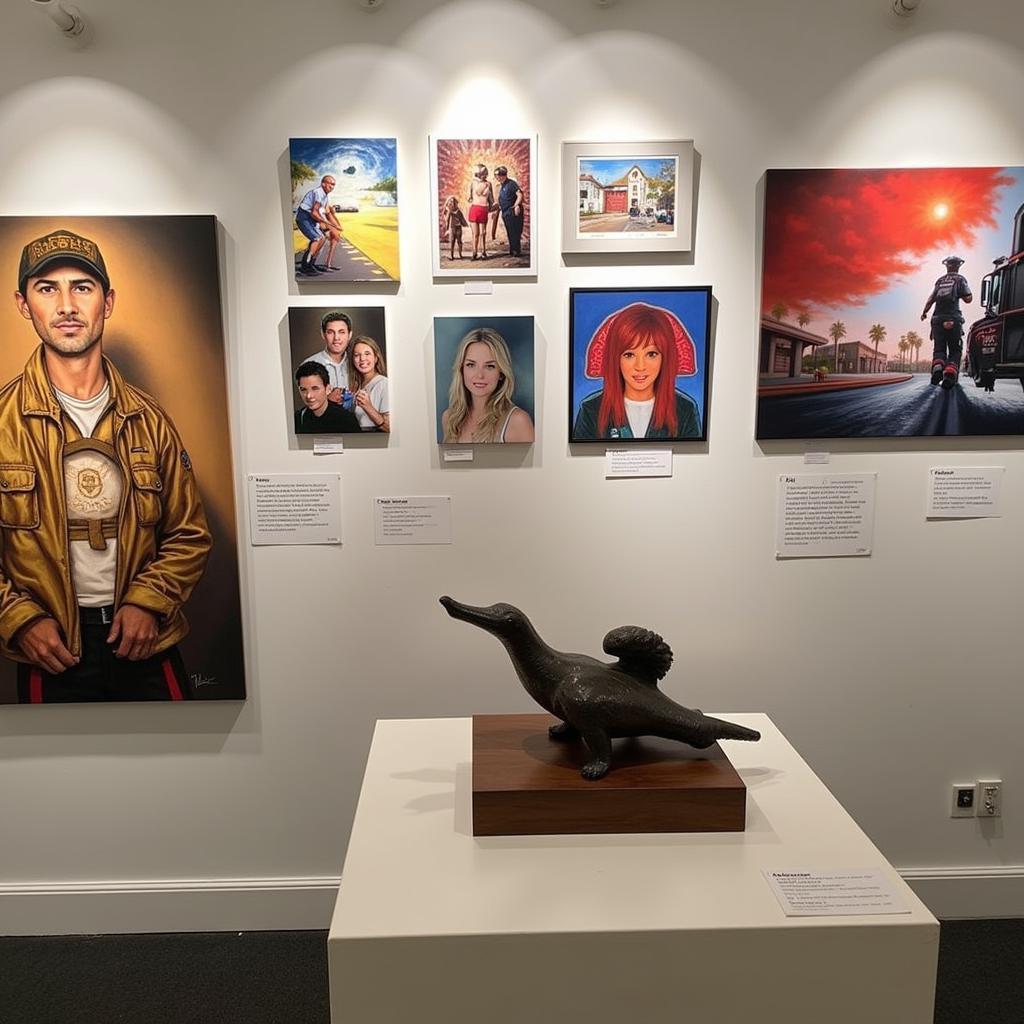Charles Bukowski Art: The Beauty of Bleakness
Charles Bukowski, the renowned “laureate of the lowlife,” wasn’t just a writer of gritty realism, but also a prolific artist whose visual works mirrored the raw and often bleak beauty of his writing. While his poems and stories continue to captivate readers with their honest portrayals of everyday struggles, Bukowski’s art offers a unique visual language that further explores themes of alienation, sexuality, and the human condition.
From Page to Canvas: Exploring Bukowski’s Artistic Expression
Bukowski’s artistic journey began long before his literary success. He dabbled in painting and drawing throughout his life, often using art as an outlet for emotions and experiences that he couldn’t express through words alone. His visual style, much like his writing, is characterized by a raw, unfiltered approach. He favored simple materials like ink, watercolor, and collage, using bold lines and stark contrasts to capture the essence of his subjects.
His artworks often depict the everyday realities of his life – lonely men in dingy apartments, barflies seeking solace in cheap drinks, and the urban landscapes of Los Angeles that served as the backdrop for his stories. These seemingly mundane scenes are imbued with a sense of melancholy and introspection, reflecting Bukowski’s own struggles with loneliness, addiction, and the search for meaning in a chaotic world.
The Unsentimental Gaze: Bukowski’s Subjects and Themes
Bukowski’s art, much like his writing, doesn’t shy away from the darker aspects of human nature. He portrays his subjects with an unflinching honesty, capturing their vulnerabilities, desires, and flaws. Women, often depicted as objects of desire and fascination, are a recurring motif in his work. However, his portrayal of female figures goes beyond mere objectification. He captures their strength, independence, and the complexities of their inner lives, reflecting his own complicated relationship with women.
Beyond individual portraits, Bukowski’s art delves into broader social themes. His urban landscapes, often depicting rundown neighborhoods and marginalized communities, highlight the gritty realities of poverty, addiction, and social alienation. These works serve as a visual commentary on the underside of American society, reflecting Bukowski’s own experiences as an outsider navigating the margins.
The Legacy of a Literary Rebel: Bukowski’s Enduring Influence
Although he gained greater recognition for his writing, Charles Bukowski’s art continues to resonate with audiences today. His raw, unflinching style and his willingness to explore the darker side of human nature remain strikingly relevant in a world grappling with its own complexities. His art offers a unique window into the mind of a literary icon, revealing the depth and breadth of his creative vision.
Bukowski’s artistic legacy lies in his ability to find beauty in the mundane, the melancholic, and the often-overlooked corners of human experience. His art serves as a reminder that even in the darkest of places, there is a raw, unfiltered beauty waiting to be discovered.


